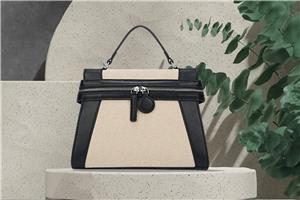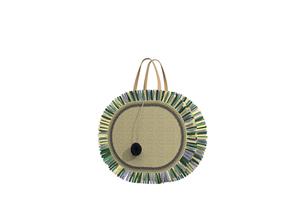Top 5 Yarns for Crochet Bags: Expert Recommendations
Top 5 Yarns for Crochet Bags: Expert Recommendations
Choosing the right crochet yarn is crucial for any project, but it becomes especially essential when crafting the perfect crochet bag. The selection of yarn not only impacts the durability and functionality of the bag but also its aesthetic appeal. With various materials available, such as cotton yarn, t-shirt yarn, and acrylic yarn, crocheters are faced with a plethora of choices. Understanding the properties and benefits of each type of yarn can significantly enhance the outcome of your crochet projects, making it imperative to select wisely for both novice and expert crafters alike.
This article aims to navigate through the abundant options, spotlighting the top 5 yarns for crochet bags. The focus will be on jute yarn, known for its robustness and eco-friendly attributes, and cotton yarn, favored for its softness and versatility. Additionally, acrylic yarn will be examined for its affordability and easy maintenance. Beyond these, the article will delve into recycled yarn and t-shirt yarn, highlighting their sustainability and unique texture, providing crocheters with a comprehensive guide to making informed decisions on the best yarns for their bag-making endeavors.
1.Jute Yarn
Jute yarn, derived from the jute plant, is celebrated for its natural, durable qualities. Often used in products like burlap, sacks, and twine, jute yarn is a popular choice for crochet projects, especially for those looking to create robust items like bags and baskets.
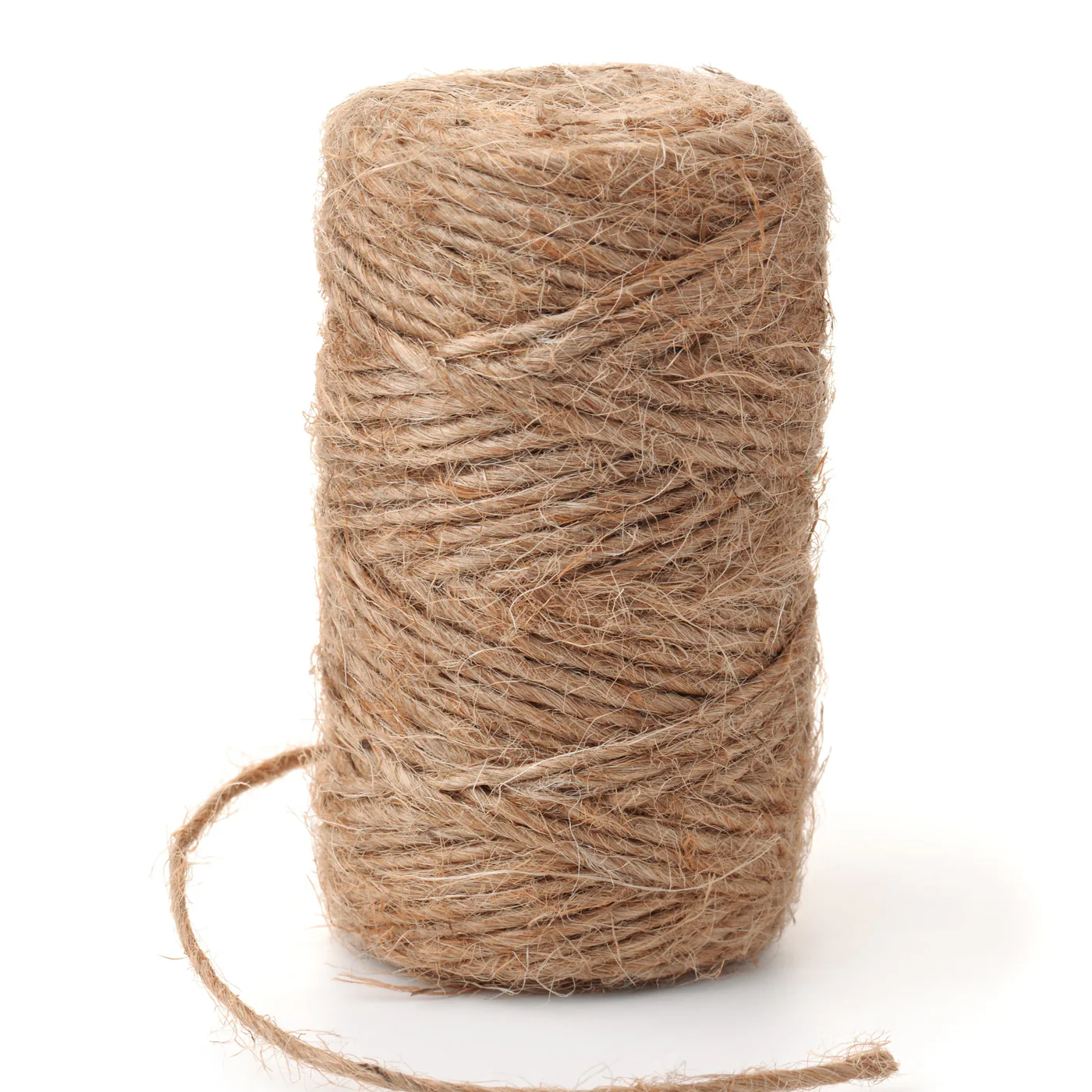
Advantages of Using Jute Yarn
Jute yarn is known for its strength and durability, making it an excellent material for items that require sturdiness and resistance to wear. It stands up well against moisture, sunlight, and insects, which prolongs the lifespan of the products made from it. Furthermore, jute is a sustainable choice; it is a renewable resource that does not deplete natural resources, making it an eco-friendly option for crafters who are environmentally conscious.
Texture and Handling
While jute yarn is incredibly durable, it is also known for its coarse and rough texture, which can be challenging to handle at first. However, with use and washing, it becomes softer and more pliable, making it easier to work with over time. Crocheters might find the initial stiffness a hurdle, but adjusting the hook size or the way the yarn is held can alleviate some of these difficulties. Despite its roughness, the rustic appeal of jute yarn makes it a favored choice for projects that benefit from a natural aesthetic.
Working with jute yarn can also be a bit messy as it tends to shed small fibers, but this is typically a temporary issue that diminishes as the fiber is worked and manipulated. Despite these minor challenges, the benefits of using jute yarn, particularly for projects like crochet bags that require durability and a bit of structure, are significant.
2.Cotton Yarn
Why Choose Cotton Yarn?
Cotton yarn is celebrated for its durability, elasticity, and breathability, making it an excellent choice for crochet bags that may be used for groceries or other heavy items. It's tough and wear-resistant, which ensures that bags made from cotton yarn hold up well under frequent use. Additionally, cotton yarn is lightweight and allows air circulation, which is particularly beneficial for market bags.
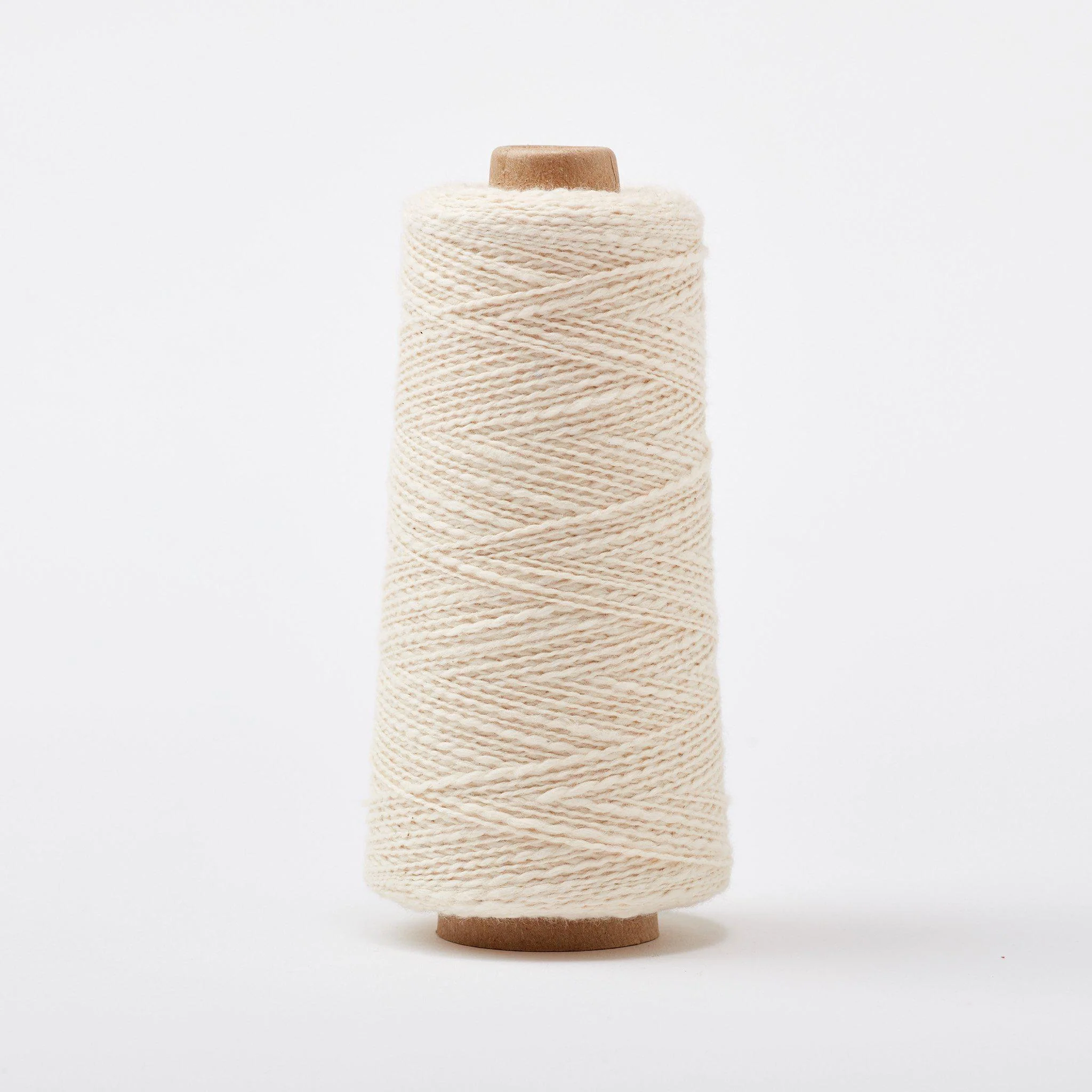
Types of Cotton Yarn
Cotton yarn comes in various forms, each offering unique benefits. Mercerized cotton has undergone a chemical treatment that strengthens the yarn, increases its luster, and enhances dye absorption, resulting in vibrant, long-lasting colors. Examples of high-quality mercerized cotton yarns include Patons' cotton DK and Lion Brand's 24/7 Cotton, which are praised for their smooth texture and sheen.
For those seeking an even more luxurious option, Pima and Egyptian cottons are known for their extra-long fibers, which make the yarn softer, stronger, and more durable. These types of cotton are ideal for projects that require a touch of elegance and comfort.
Cotton blends are also popular, combining the lightness and breathability of cotton with other fibers to achieve desired characteristics. For instance, a blend of cotton and acrylic might be chosen to add warmth and softness.
Care and Maintenance
Cotton yarn is relatively easy to care for, which adds to its appeal for use in crochet bags. Bags made from cotton yarn can generally withstand machine washing, though hand washing is recommended to preserve the integrity of the bag's shape and texture. When machine washing is necessary, it's advisable to use a gentle cycle and place the bag in a mesh laundry bag to avoid any snags or stretching.
For spot cleaning, a mild detergent and cold water are sufficient. After cleaning, cotton yarn bags should be air-dried to prevent any shrinkage or deformation.
In summary, cotton yarn is a versatile choice for crochet projects, particularly bags, due to its strength, ease of maintenance, and the variety of types available. Whether you choose a robust mercerized option or a luxurious blend, cotton yarn offers both practicality and aesthetic appeal for your crafting needs.
3.Acrylic Yarn
Characteristics of Acrylic Yarn
Acrylic yarn is crafted from synthetic fibers, making it a highly durable and easy-to-care-for option for crochet projects. Its synthetic nature ensures that it remains lightweight, which is ideal for creating bags that are easy to carry without adding unnecessary weight. One of the standout characteristics of acrylic yarn is its resistance to pilling, a common problem with many natural fibers. This attribute makes acrylic yarn an excellent choice for items that will be used frequently, such as tote bags and backpacks.
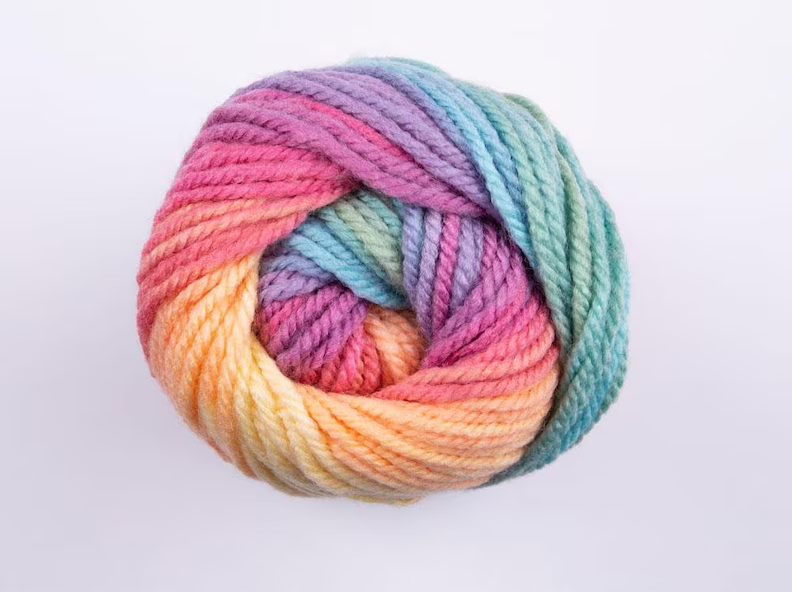
Color Range and Availability
Acrylic yarn excels in its colorfastness, retaining vibrant colors even after multiple washes. This makes it a preferred choice for projects where color retention is crucial. Acrylic yarn is available in a wide array of colors, offering over 100 shades in some brands, which allows for great flexibility in design and personalization of crochet projects. Additionally, it comes in various forms like ombre and variegated colors, providing even more creative options for crafters.
Cost-Effectiveness
Acrylic yarn is known for its affordability, which makes it an attractive option for both beginners and experienced crafters on a budget. The price of acrylic yarn can vary, but it generally remains a cost-effective choice compared to other fibers like wool or cotton. For those looking to undertake large projects, acrylic yarn can be particularly economical due to its lower cost per yard compared to many natural fibers. This yarn not only suits those just starting out with crochet but also those looking to manage their crafting expenses without compromising on the quality and appearance of their projects.
4.Recycled Yarn
Recycled yarns are transforming the fiber arts industry by offering sustainable options that align with the environmental values of many crafters. These yarns are typically made from pre-consumer or post-consumer waste materials, such as fabric scraps, plastic bottles, and even old clothing, which helps reduce landfill waste and conserves resources by utilizing existing materials.
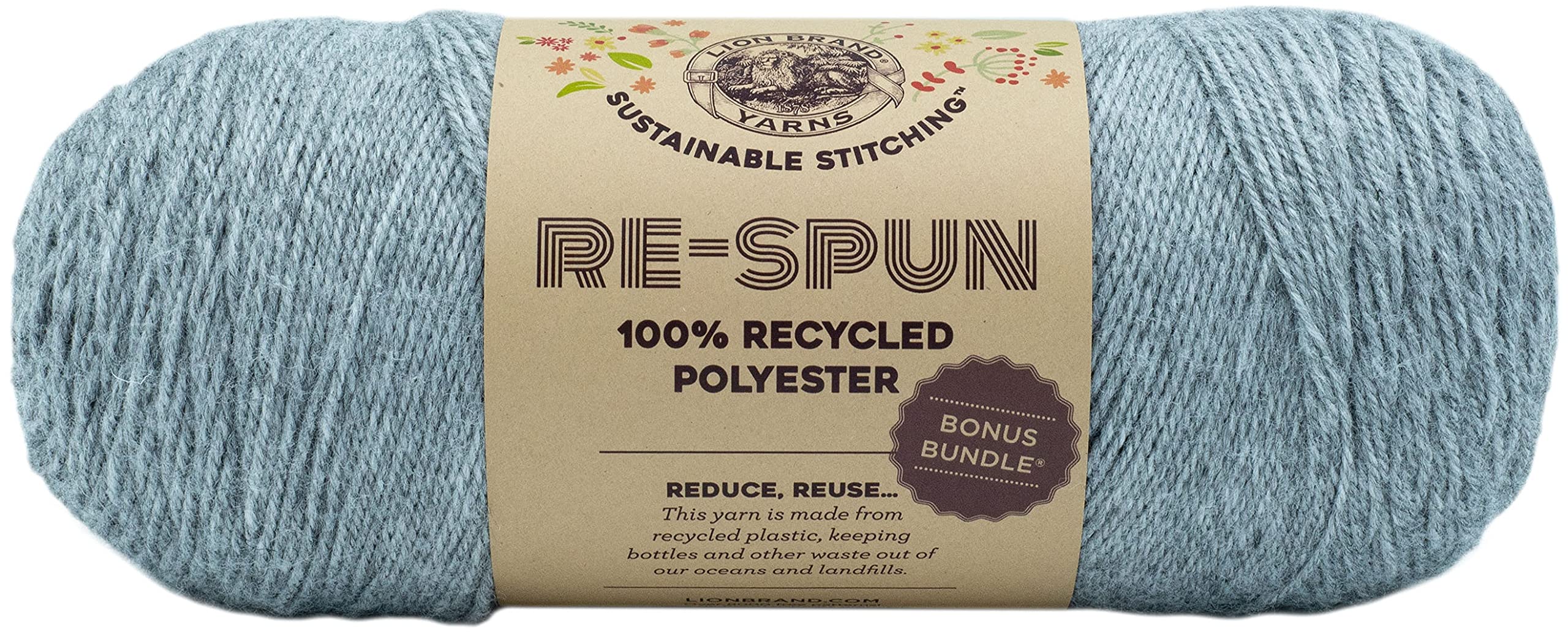
Types of Recycled Yarn
The variety of recycled yarns available today includes those made from recycled cotton, wool, and polyester. These materials are often sourced from factory remnants or used garments, sorted by fiber type and color to minimize the need for re-dyeing, thus conserving energy and reducing pollution. Among the popular types are recycled denim yarns, eco-friendly wool blends, and yarns made from recycled plastic, which are used in a range of crafting projects due to their durability and unique textures.
Environmental Advantages
Choosing recycled yarns offers numerous environmental benefits. These yarns significantly reduce the need for new fiber production, which is particularly crucial for materials like cotton that are water, pesticide, and land-intensive. Additionally, the process of recycling fibers consumes lower energy and uses less water, especially when the re-dyeing step is bypassed. This not only conserves precious resources but also results in decreased chemical usage, thus minimizing ecological harm. Moreover, using recycled yarns helps in minimizing landfill waste and reducing greenhouse gas emissions associated with the production of new fibers.
Popular Recycled Yarn Products
Recycled yarns are not only beneficial for the environment but also produce high-quality, durable, and aesthetically pleasing products. Brands like Lion Brand's "Re-Up" line utilize 100% recycled polyester from plastic bottles, offering a variety of colors suitable for diverse projects. Another notable product is the Paintbox Recycled Cotton Worsted, which is perfect for making crochet tops, accessories, and market bags due to its similar qualities to traditional worsted-weight cotton yarn but made entirely from recycled materials. Additionally, products like Re-Spun Thick & Quick? Yarn, made from 100% recycled polyester, provide options for those seeking super bulky yarns for quicker and larger projects.
By incorporating recycled yarns into their projects, crafters not only contribute to a more sustainable environment but also enjoy crafting with materials that are both innovative and aligned with their ethical values.
5.T-Shirt Yarn
What is T-Shirt Yarn?
T-shirt yarn, also known colloquially as jersey yarn, T-yarn, and tarn, is a type of chunky yarn made from recycled textiles that would otherwise be discarded from factories. It's crafted primarily from cotton, jersey, or polyester materials and is known for its thickness and durability. The yarn's availability and characteristics can vary significantly as it depends on the fashion industry's remnants, meaning the color and patterns are influenced by current fashion trends.
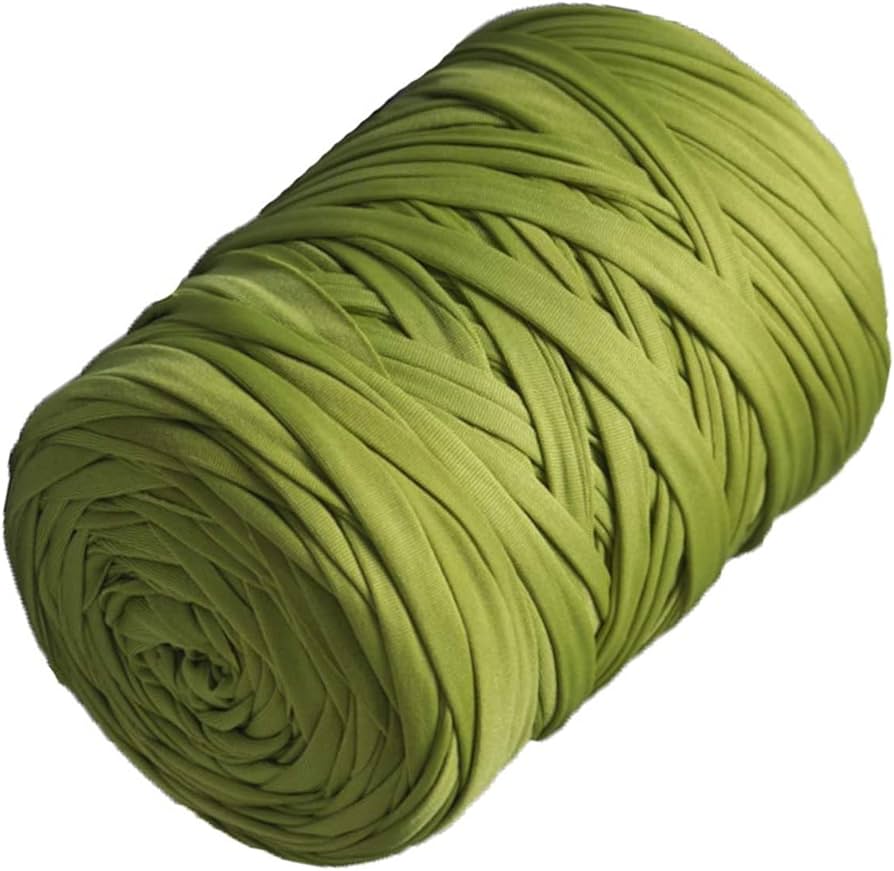
DIY Crafting with T-Shirt Yarn
Creating t-shirt yarn involves a straightforward process that can be done at home, providing a great way to recycle old t-shirts. To start, one needs to flatten the t-shirt on a clean surface, cut off the sleeves and the hem, and then cut the main body of the shirt into strips of about one inch thick. These strips are then cut at an angle to create one continuous strip of fabric, which is stretched to curl the material, forming the yarn. This DIY approach not only recycles fabric but also allows for customization in the thickness and elasticity of the yarn.
Durability and Maintenance
T-shirt yarn is celebrated for its robustness, making it ideal for projects that require durable materials, such as crochet bags or rugs. Due to its fabric composition, t-shirt yarn is thick and can handle wear and tear well, often not requiring a lining for projects because of its sturdiness. Maintenance of items made from t-shirt yarn is straightforward, as the material can generally withstand regular washing, though care should be taken to use gentle washing cycles and avoid harsh chemicals to maintain the yarn's integrity.
Conclusion
Through exploring the nuances of jute, cotton, and acrylic yarns, among others, this article has illuminated the vital considerations that crafters must make when selecting the best yarn for their crochet bag projects. The strength and eco-friendliness of jute yarn, the durability and versatility of cotton, and the vivid colors and cost-efficiency of acrylic yarn each cater to different needs and aspirations in crochet bag creation. These fibers, along with the unique characteristics of recycled and t-shirt yarns, offer a wide range of options, enabling crafters to produce works that are not only functional but also aesthetically pleasing and personally significant.
Understanding the properties of these yarns allows for an informed decision-making process that enhances the final product's quality and purpose. Whether your project demands the durability of jute, the softness of cotton, or the vibrant hues of acrylic, selecting the appropriate yarn is pivotal to achieving your crafting goals. For enthusiasts eager to put this knowledge into practice, feel free to custom your crochet bag samples, bringing your unique vision to life. As the crochet community continues to evolve, the insights shared here serve as a foundation for both beginners and experts to innovate and excel in their craft, keeping the art of crochet vibrant and diverse.
FAQs
1. What type of yarn is ideal for crafting crochet handbags?
Hemp, jute, and cotton yarns are excellent choices for crocheting handbags due to their durability and minimal stretch. When combined with tightly executed crochet stitches, these materials help maintain the bag's shape and ensure it remains robust and sturdy.
2. Which crochet stitch is most suitable for making bags?
The Thermal Stitch is highly recommended for bag projects. This thick, sturdy crochet stitch provides substantial texture, making it perfect for items that require durability such as bag straps, potholders, coasters, and blankets.
3. What is the most commonly used yarn in crochet?
Worsted weight yarn is particularly popular among crocheters, especially in the USA where it is often the first type of yarn encountered. In other regions, this yarn may be referred to as 4-ply or medium weight.
4. How do I determine the number of yarn skeins needed for a crochet bag?
To estimate the number of skeins required for a crochet bag, divide the total grams of the planned finished bag by the grams per skein. For example, if your finished bag is approximately 940 grams and one skein is 85 grams, you would need about 11 skeins. This calculation provides a rough estimate, but it should guide you closely to the quantity needed.

